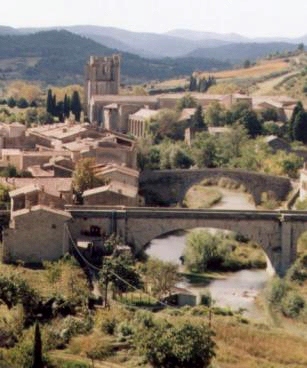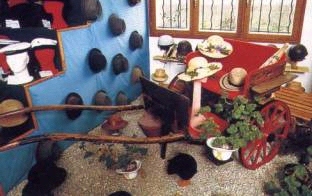Carcassonne.As it now stands the fortifications are the best example of medieval fortifications in existence, although it is agreed that they have been heavily renovated.
The town has been used in numerous films, the latest being “Robin Hood, Prince of Thieves”. The walls consist of a vast circle of double battlements enclosing medieval streets, that today, contain many boutiques, souvenir shops and restaurants, it relies heavily on tourism.
On the 14th July there is a massive firework display to celebrate Bastille Day, in which the whole of the Cite appears to go up in flames.


